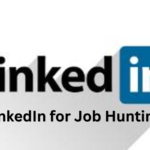Landing a new job can be exciting, but it’s good to recognize signs that the workplace might not suit you. Studies show over 70% of employees have encountered a toxic work environment.
While most of us focus on impressing the interviewers, it’s equally important to notice red flags during the interview process.
What is a Toxic Workplace?
A toxic workplace is one where negative behaviors, poor management, and lack of support are prevalent. This environment often fosters stress, anxiety, and unsatisfactory working conditions. Typical characteristics include:
- High stress and anxiety levels among employees.
- Poor communication between staff and management.
- Lack of support and resources to perform tasks effectively.
Common Signs of a Toxic Workplace
Recognizing a toxic workplace involves looking for specific signs, such as:
- High employee turnover.
- Negative or ambiguous company culture.
- Unrealistic expectations and overburdening employees.
Impact on Employees
The impact of toxic workplaces on employees is significant:
- Mental Health: Increased stress, anxiety, and depression.
- Productivity: Decreased efficiency and performance.
- Turnover: High rates of employees leaving the company.
Interview Red Flags That Predict a Toxic Job
Red Flag 1 – Lack of Clear Job Description
A well-defined job description is essential as it outlines the role’s responsibilities, expectations, and qualifications. Without it, you’re left guessing about your day-to-day duties.
Signs of Vague or Misleading Job Descriptions
Be wary of descriptions that:
- Are too brief or general.
- Use excessive jargon without clarification.
- Lack of specifics about the role’s responsibilities and expectations.
Questions to Clarify Job Expectations
To ensure clarity, ask:
- “Can you describe a typical day in this role?”
- “What are the key performance indicators for this position?”
- “How does this role fit into the company’s goals?”
Red Flag 2 – High Employee Turnover
Indicators of High Turnover During Interviews
High turnover can signal underlying issues. Look for:
- Frequent job postings for the same position.
- Interviews with multiple people who have been in their roles for less than a year.
- Comments about hiring cycles and constant onboarding.
Reasons Behind High Turnover Rates
Common reasons include:
- Poor management and leadership.
- Lack of growth opportunities.
- Negative company culture.
How to Inquire About Turnover Rates
Direct questions to ask:
- “How long do employees typically stay in this role?”
- “Can you share the turnover rate for this department?”
- “What are the company’s retention strategies?”
Red Flag 3 – Negative or Ambiguous Company Culture
The Role of Company Culture in Employee Satisfaction
A positive company culture promotes job satisfaction, teamwork, and employee morale. It’s crucial for long-term happiness and productivity.
Identifying Negative Cultural Traits During an Interview
Look for signs such as:
- Disengaged employees who seem unhappy.
- Lack of diversity in the workplace.
- Ambiguity when discussing the company’s values.
Asking Specific Questions About Company Values
To gauge culture, ask:
- “Can you describe the company’s core values?”
- “How does the company promote work-life balance?”
- “Can you provide examples of how employees live out the company values?”
Red Flag 4 – Overly Rigid or Unrealistic Expectations

Examples of Unrealistic Job Expectations
Unrealistic expectations can lead to burnout and job dissatisfaction. These include:
- Excessive working hours without compensation.
- Unachievable targets and deadlines.
- Lack of support for completing challenging tasks.
Consequences of Overly Demanding Roles
Such roles can:
- Increase stress and reduce mental well-being.
- Lower productivity due to burnout.
- Lead to high turnover rates.
Strategies to Evaluate Job Expectations
Ask questions like:
- “What are the typical working hours?”
- “How are targets set and measured?”
- “What support is available for meeting challenging goals?”
Red Flag 5 – Poor Communication from Interviewers
Signs of Poor Communication During Interviews
Communication during interviews sets the tone for future interactions. Be cautious if:
- Interviewers need to be prepared and consistent.
- Questions go unanswered or need to be more specific.
- Follow-ups should be completed on time.
Impact of Communication Issues on Daily Work-Life
Poor communication can result in:
- Confusion about tasks and responsibilities.
- Misaligned goals and priorities.
- Frustration and low morale.
How to Gauge Communication Effectiveness
Inquire about:
- “How does the team communicate on a daily basis?”
- “What tools are used for communication and collaboration?”
- “Can you provide an example of effective communication within the team?”
Red Flag 6 – Disorganized or Chaotic Interview Process
Indicators of Disorganization During Interviews
Disorganization might indicate more significant operational issues. Watch for:
- Last-minute changes in interview schedules.
- Interviewers are need to be made aware of your resume or background.
- Multiple reschedules without proper communication.
What Disorganization May Imply
Disorganization can suggest:
- Internal processes could be improved.
- Lack of leadership.
- Potential for daily chaos in the workplace.
Tips for Assessing Organizational Structure
Questions to consider:
- “Can you describe the company’s organizational structure?”
- “How are projects managed and tracked?”
- “What tools are used to ensure smooth operations?”
Red Flag 7 – Inconsistent or Conflicting Information
Importance of Consistency in Company Messaging
Consistency reflects reliability and transparency in an organization. Inconsistencies can be red flags.
Identifying Conflicting Information
Look out for:
- Different answers from various interviewers about the same topic.
- Vague responses that change upon further questioning.
- Public information that contradicts what you hear during interviews.
Methods to Verify Information
To cross-check, ask:
- “Can you clarify the company’s mission and goals?”
- “How does this role contribute to the company’s success?”
- “What are the key challenges currently facing the team?”
Red Flag 8 – Avoidance of Critical Questions
Types of Questions Interviewers Might Avoid
Watch out if interviewers skirt around questions regarding:
- Company financial health and stability.
- Management practices and leadership styles.
- Work-life balance and employee benefits.
Why Avoidance is a Major Red Flag
Avoidance can indicate:
- Underlying problems within the company.
- Lack of transparency.
- Potential for future dissatisfaction.
How to Approach and Rephrase Critical Questions
To get answers, try:
- “Can you provide more details about the company’s financial performance?”
- “What is your approach to managing the team?”
- “How does the company support work-life balance?”
Red Flag 9 – Lack of Growth and Development Opportunities
Importance of Professional Growth
Growth opportunities are essential for job satisfaction and career advancement. Without them, you may feel stagnant.
Signs of Limited Growth Opportunities
Look for:
- Lack of training programs and development resources.
- Few or no promotions from within the company.
- Vague responses about career paths.
Questions to Ask About Training and Development
Inquire about:
- “What training programs are available for employees?”
- “How often are performance reviews conducted?”
- “Can you share examples of career progression within the company?”
Red Flag 10 – Negative Reviews and Reputation
The Significance of Company Reviews
Online reviews can provide insights into the company’s culture and employee satisfaction. They can often reveal underlying issues.
How to Research and Interpret Reviews
To evaluate reviews:
- Use multiple platforms like Glassdoor, Indeed, and LinkedIn.
- Look for patterns in feedback.
- Consider the context and date of reviews.
Balancing Negative Reviews with Other Factors
While reviews are essential, also consider:
- Personal experiences during the interview process.
- Direct interactions with potential colleagues.
- Additional research on the company’s values and mission.
Recap
Recognizing red flags during interviews can save you from a toxic work environment. It’s important to prioritize your long-term job satisfaction and well-being. Trust your instincts, ask the right questions, and make informed decisions.
FAQs
Q1: What are the most common red flags in job interviews?
A: Common red flags include vague job descriptions, high turnover rates, and poor communication from interviewers.
Q2: How can I verify the information provided during an interview?
A: Cross-check information through multiple sources, ask detailed questions, and research online reviews.
Q3: Why is company culture influential in choosing a job?
A: Company culture affects job satisfaction, productivity, and overall well-being. A positive culture leads to a happier work life.




